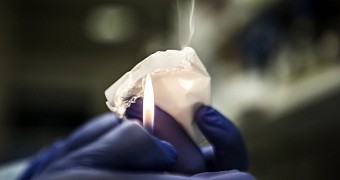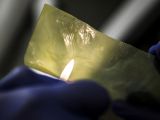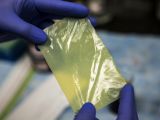Most mobile devices, be they smartphones, tablets, smartwatches or whatever else, have been gaining longer and longer battery lives. This has mostly been owed to more efficient hardware, however, not an improvement in batteries.
There have been several attempts at improving battery power and lifespan, and while some successes have been recorded, they aren't expected to have any effect in the short term.
Deep fried graphene fluff balls have only just been thought up, for example, and so have those 20-year lithium-ion batteries.
The bottom line is that the jury is still very much out on what would be the best way to make awesome new batteries.
This, by extension, means that all research proposals are welcome. Proposals like the one submitted by a team of scientists at the University of Michigan.
Kevlar-based batteries are the solution!
That's what the University of Michigan team claims. They have discovered that nano-scale kevlar membranes could be used to insulate a lithium-ion battery's electrodes.
This can prevent the build-up of metal tendrils that leak current, while still allowing charged lithium ions to pass the current to the proper circuits.
Kevlar has been showing up in many odd places, but you might know the word best from all those action movies that involved vests made of the material.
The new nanoscale material is made like this: the researchers took some fibers and layered them on top of each other in thin sheets, guaranteeing good lithium-ion connectivity between the electrodes.
The benefits of kevlar-wrapped batteries
An increase in capacity is guaranteed, even if it's not clear how big it will be. The important thing is that the capacity increase will happen without affecting the size of the batteries.
Indeed, if anything, batteries can become thinner and lighter, leading to thinner and lighter smartphones, tablets, smartwatches and whatever else. All the while, the risk for short-circuiting will be going down.
It is a real shame that no one expects mass production of the kevlar fiber to begin before late 2016, over a year from now. A year and a half or so, probably. Fortunately, thirty companies have pledged their support or expressed interest in placing orders for the material, or batteries created with it, so we don't need to worry about this breakthrough fading into obscurity like so many others.

 14 DAY TRIAL //
14 DAY TRIAL // 


